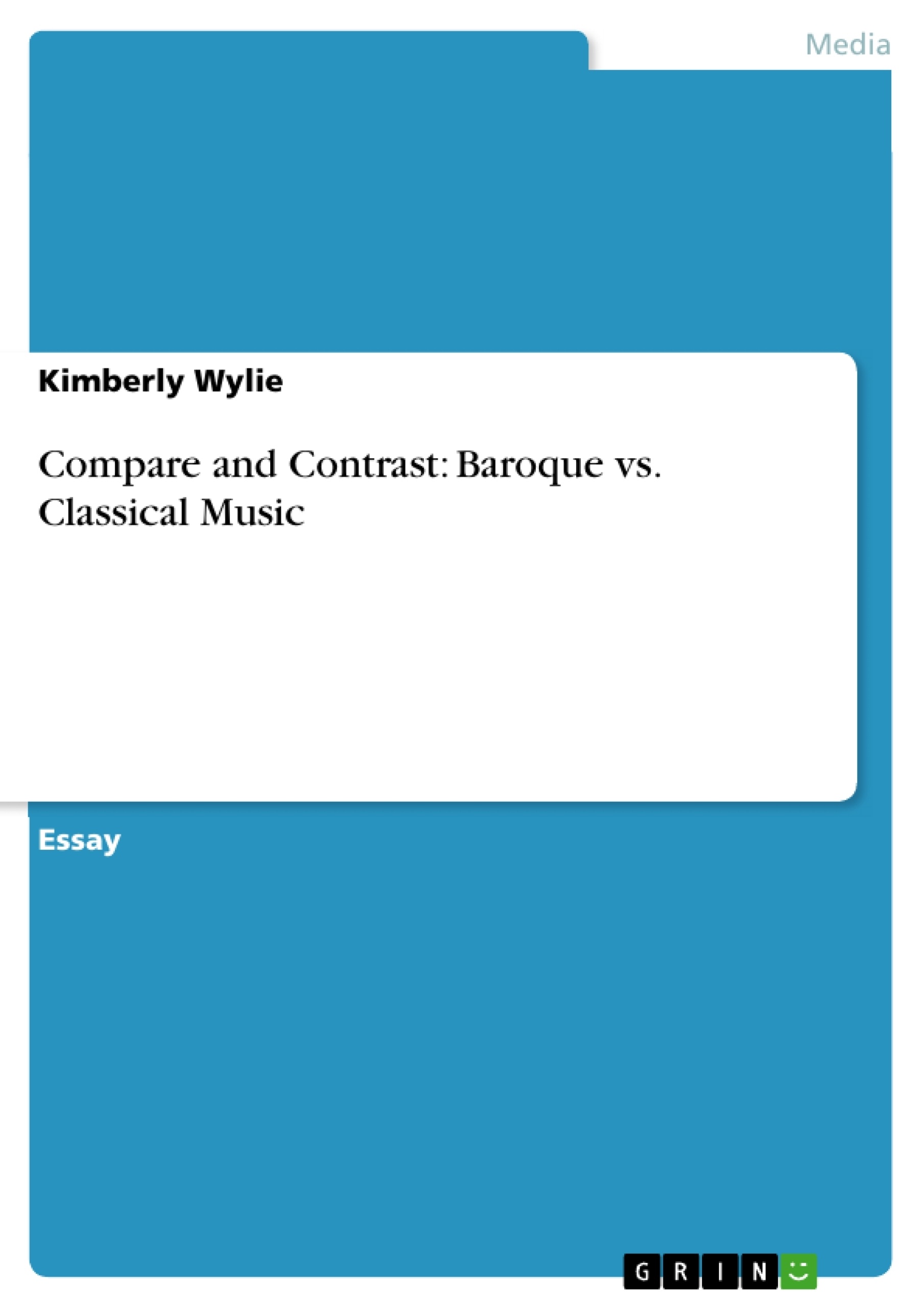At first glance, the Baroque music period and Classical music periods seem to be very much alike. They do, in fact, have many similarities, for instance, the same basic orchestral and chamber ensembles. However, by carefully analyzing each period, distinct differences can be found. The word ‘Baroque’ comes from the Italian word barocco, which literally translates to bizarre, however some feel that when dealing with the arts, exuberant is closer to the aim of the translation, and exuberant is a word that perfectly fits this style of music. Although Baroque was first used to describe ornately decorated buildings in Austria and Germany, it quickly became used to describe a similarly ornate period of music.
Table of Contents
- Compare and Contrast: Baroque vs. Classical Music
- Baroque Music
- Classical Music
- A Comparison and Contrast of the Two Periods
- The Impact of the Periods on Society
Objectives and Key Themes
This text aims to provide a comparative analysis of Baroque and Classical music, highlighting their similarities and differences. It explores the historical context, stylistic characteristics, and social impact of both periods.
- Evolution of musical practice from the Renaissance to Baroque and Classical periods
- Influence of historical events and societal shifts on music
- Key stylistic elements and compositional techniques of Baroque and Classical music
- The role of music in social and cultural life
- The relationship between music and emotions
Chapter Summaries
- Baroque Music: This chapter delves into the origins and key features of Baroque music, exploring the concept of secunda prattica, basso continuo, and the Doctrine of Affections. It also discusses the development of instruments and the rise of prominent composers like Johann Sebastian Bach.
- Classical Music: This chapter focuses on the defining characteristics of Classical music, emphasizing the sonata principle, dynamic contrast, and the shift towards simpler harmonies and textures. It highlights the contributions of composers like Wolfgang Amadeus Mozart.
- A Comparison and Contrast of the Two Periods: This chapter examines the distinct features of Baroque and Classical music, contrasting their stylistic elements, instrumentation, and overall aesthetic. It explores the evolution of musical forms and the role of emotions in music.
Keywords
Key terms and concepts discussed in this text include Baroque music, Classical music, secunda prattica, basso continuo, Doctrine of Affections, sonata principle, dynamic contrast, homophonic textures, counterpoint, modulation, and the impact of historical events on musical styles.
- Quote paper
- Kimberly Wylie (Author), 2003, Compare and Contrast: Baroque vs. Classical Music, Munich, GRIN Verlag, https://www.grin.com/document/56628




